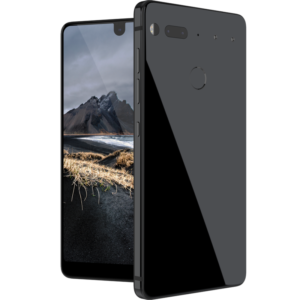A few weeks ago, a huge announcement hit the tech world—Andy Rubin, the guy who created the Android operating system, was launching an all-new company that aims to be “the first great gadget maker since Apple,” as Wired described it.

The company is called Essential Products, and its first product immediately grabbed headlines: a $699 smartphone called the Essential Phone.
The phone looked so beautiful I couldn’t wait to check out the pre-sale page the company had set up and find out everything about it. I was PUMPED.
But before I could even get halfway down the page, my enthusiasm was gone. It had totally lost me.
I turned to Twitter and quickly found I wasn’t alone.
Some folks couldn’t figure out what the page was even selling:
Motion on that page is horrible, among other things. Couldn’t deal. I *still* don’t know what it is! 😮 Not sure I wanna know at this point
— Nicolas Steenhout (@vavroom) June 1, 2017
Design Fail #UI – Maybe tell us what your company does?
Introducing Essential https://t.co/ppFipNRiUc via @SidebarIO— Dexter Hartley (@DXTR_creative) June 1, 2017
Others didn’t see what the product had to offer them:
I am not a fan of this website. Tons of info, but hardly any of it spoke to how this product could improve my life https://t.co/6DRBj0HDxs
— Nathan Bashaw (@nbashaw) May 31, 2017
Sure, these tweets didn’t represent all of the response to the Essential Phone page (some of which was extremely enthusiastic), but they confirmed the same feeling I had when experiencing it for the first time: this page did not come close to the potential of the product.
So I decided to investigate, section by section, exactly what was happening. The result is a visual breakdown of the entire page you can view below.
It works like a slideshow: just click the arrow on the right side to advance (after you click the first time you can simply use your arrow keys).
If you’re on mobile, turn your phone to landscape for the best experience!
Before we go on, there’s an important point to acknowledge: with all the iPhone comparisons, it’s tempting to analyze this product as a mass-market competitor to companies like Apple and Samsung. But that’s not what it is yet. Enter this excerpt from the Wired article:
If Essential sells 50 million phones this quarter, Jason Keats, the company’s head of product architecture, is totally screwed. Essential simply cannot produce that many phones. That’s the point. “We’ve gone after technologies and methods of manufacturing that aren’t designed to support 50 million devices,” he says. He wants Essential to think like a high-end watchmaker, not a commodity gadget builder…” We’re not for everybody,” Keats says. “You know it’s going to be a little exclusive.”
With that in mind, it’s easier to understand why the Essential phone sales page emphasized certain things that the average consumer probably doesn’t care about.
Still though, I think this quote gets to the heart of what I believe was somewhat buried on the page:
Rubin wants the Essential phone to clearly and emphatically state that the person carrying it isn’t won over by marketing, isn’t a fanboy, isn’t driven by trends.
That’s the “anti-iPhone” sentiment that I repeatedly wished was more evident throughout the breakdown. That, along with Essential’s open source ethos, is this product’s big idea. And I think it’s a message that will connect a lot more with the buyers they’re going after right now than simply showcasing a 360 camera will.
So, what do you think of Essential’s page? Leave a comment and let me know!
P.S. What did you think of this visual breakdown format? It was inspired by two things: 1) the work I’ve done as an editorial advisor for Hardbound, and 2) the excellent onboarding teardowns Samuel Hulick does at UserOnboard.com, which I’ve been a fan of for a long time.
